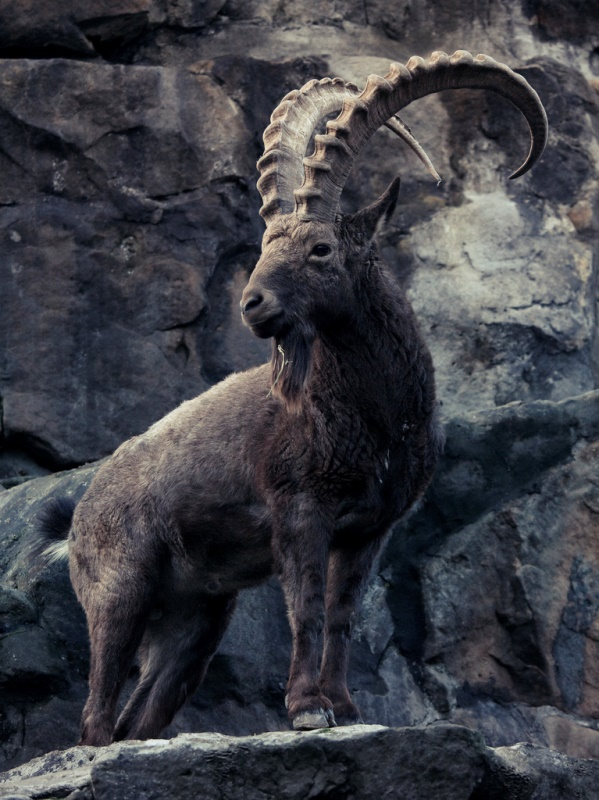Jammu & Kashmir
Himalayan Ibex
- 03 Apr 2025
- 2 min read
Why in News?
Authorities rescued a Himalayan Ibex with a gunshot injury and arrested four poachers in a remote area between Leh and Kargil districts in Ladakh.
Key Points
- Himalayan Ibex:

- Scientific Classification & Habitat:
- The Himalayan Ibex is a subspecies of the Siberian Ibex, scientifically named Capra sibirica hemalayanus.
- It is native to the Himalayan region, including India, Pakistan, Tibet, and Nepal.
- These ibexes inhabit high-altitude regions, typically found between 3,000 and 5,800 meters in the Trans-Himalayan region.
- In India, they are primarily found in Jammu and Kashmir, Himachal Pradesh, and Uttarakhand.
- Physical Features:
- An adult ibex weighs around 90 kg and stands about 40 inches tall.
- Males are larger than females and possess massive curved horns with annual growth notches.
- Their coat ranges from light brown to reddish-brown, with a white belly and black-and-white leg markings.
- During winter, their thick woolly coat provides insulation, which they shed in early summer.
- They exhibit a darker dorsal stripe, with coat color varying from pale to dark brown.
- Behavior & Adaptations:
- Himalayan Ibexes are usually found in small herds, sometimes forming groups of up to 50 individuals.
- They are highly agile and can run at speeds of up to 50 km/h, enabling them to navigate rugged mountainous terrain.
- Conservation Status:
- According to the IUCN Red List, the Himalayan Ibex is classified as Near Threatened, facing threats from habitat loss, poaching, and climate change.
- Scientific Classification & Habitat:




